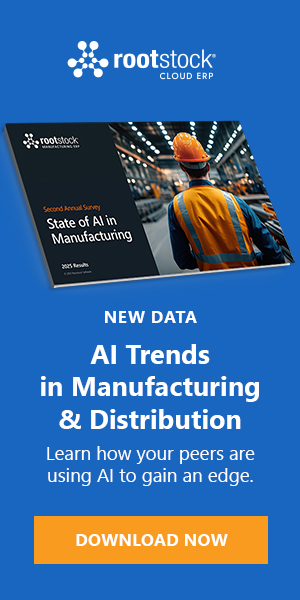The pandemic might be almost behind us, but it has changed us – as businesses and consumers – in unprecedented ways. We saw many companies shut shop, some scripted a fresh start, and a few even managed to thrive. But each story of success and failure was an important lesson. And usually, it was a lesson in how efficiently a business leveraged its data to anticipate customer behaviors, pivot strategies on the go, and stay relevant in a digital-only world. Yes, we have moved on from digital-first, thanks to the last two years.
Data and insights have emerged as the most vital tools in your arsenal to stay afloat and thrive. But making the most of these tools requires you to take a long, hard look at your data culture and break the silos and efficiencies in your data stack.
Siloed enterprise data is a pressing issue. But why does it exist, even in 2022?
Siloed data is a pervasive problem across businesses, irrespective of their size. In the 1990s most businesses chose an on-premise ERP and therefore combined multiple applications into one large application. Currently, as part of digital transformation, most businesses have chosen multiple cloud systems to replace their on-premise ERP, thereby creating multiple sources of data. In a siloed system, data collected by one application cannot be accessed and used by other applications. This deprives users of data and management of crucial insights, limiting the enterprise’s ability to make informed decisions and take timely action.
To quantify the gravity of this challenge, consider these insights. IDC reported that businesses lose up to a quarter of their revenue due to data inefficiencies, and Gartner revealed that poor quality of data is accountable for an average of $15m per year in losses.
With enterprise resource planning (ERP) systems, the problem aggravates given the many moving parts of the operation. The reason data silos continue to hamper ERP systems ranges from a legacy approach, data and tech stack management, too many diverse departmental ERP systems and applications that don’t and sometimes can’t speak to each other. Whatever the reason, siloed data has a far-reaching impact, from inferior decision-making to hampering automation goals. In 2022 and beyond, these are critical goals for any business. Meeting them begins with integrating your ERP systems and, subsequently, your data sets.
The beauty of data is that it never dies. So, the more accessible your data-based insights are, the higher the chances that different business functions will be able to work on shared goals, collaborative strategies, and streamlined execution.
ERP investment started with the premise of data collaboration and data-driven decisions – one version of the truth – to power sustainable growth. Siloed data defeats that purpose. If you are still not investing in addressing your ERP data silos with urgency, you are leaving money on the table. A unified data model, however, will come to the rescue and help maximize your ERP and data stack investments.
Why a unified data model ticks off the right boxes
CTOs and CIOs across the world are looking for ways to integrate their data sets and end silos to achieve meaningful organizational efficiency and data collaboration between different business functions. A unified data model is emerging as a dependable solution to bridge the insight gap left behind by siloed data. A unified data model combines disparate sources to offer enterprises a single view of their data.
The approach works because it integrates disparate data sources like ERP systems, customer relationship management (CRM) tools, and product analytics platforms, among other data stacks, consolidating them into a unified data warehouse. With a unified data model, cloud-based and on-prem data sources can be unified and accessed by different ERP systems, tools and applications, and users across various business functions.
Eventually, your business users get a single source of the truth as a foundation for all their decisions.
According to the sixth annual Gartner chief data officer survey, respondents who had successfully pushed data collaboration were now leading teams that were 1.7 times more efficient at achieving verifiable value for their stakeholders. As enterprises implement unified data models, data collaboration paves the way for optimized and relevant analytics, reporting, and decision-making. These are collectively instrumental in robust business growth.
But what really pushes the case for a unified data model is the sheer quantity of data that is being generated by your users, tech stack, tools, and ERP systems. Until a decade ago, most companies stored their data in a monolithic system on a single server. Today, they juggle multiple servers, applications, and tools. Add microservices and hybrid cloud services to the mix, and the configurations can be overwhelming for any ERP system. But a unified data model can address all of these moving parts.
Consistent decisions, improved automation, lower costs: the real-world impact of unified data model
Let’s dissect how a unified data model can ramp up business performance in a digital-first world.
For starters, a unified data model acts as a bridge between multiple data sources, allowing organizations to contextualize, combine and correlate relevant data. This results in enterprise-wide and accurate insights that can help execute everyday decisions. Moreover, with data being mapped more effectively, companies can draft robust strategies based on real-time analytics.
As enterprises seek improved efficiency and resource optimization, meaningful automation is becoming a key business goal. There is more scope for leveraging next-generation technologies like AI and ML on this journey. However, AI and ML-based automation can be impactful only on the foundation of holistic, enterprise-wide data. A unified data model can improve the impact of automation.
A significant challenge that our customers face with their ERP and data stack is the need for data engineering skills for even the most minor data extraction, manipulation, or reporting requirement. A unified data model delivered through a robust tool addresses this challenge, reducing dependencies for business users with varying levels of IT and data engineering skills. This one single step can significantly reduce the data engineering skill cost in your organization.
Finally, a unified data model makes your data stack more scalable and accessible, enabling more robust insight sharing. Eventually, it can empower your business users to work shoulder-to-shoulder toward common business objectives.
Summing up
Though data silos and unified data models are relatively new buzzwords, I co-founded SplashBI all the way back in 2014, specifically with the intent of helping businesses make the most of their data investments.
The first step in this process was ERP data integration. Every day, our engineers and solutions help companies connect their disparate data sources. Flexibility in data integration enables enterprises to combine data from any source while eliminating anything that might be overburdening their ERP systems. The consolidated data yields valuable insights and reports to power transparency at all levels, enables quick pivots, and, eventually, supports sustainable business growth.
My learning along the way is that a unified data model approach is vital to reinventing the data culture across organizations, improving collaboration, and building genuinely data-driven and agile enterprises.
Maximizing the ROI on ERP and data stack investments is a pervasive CXO aspiration. I am confident that it’s possible with a unified data model approach.






